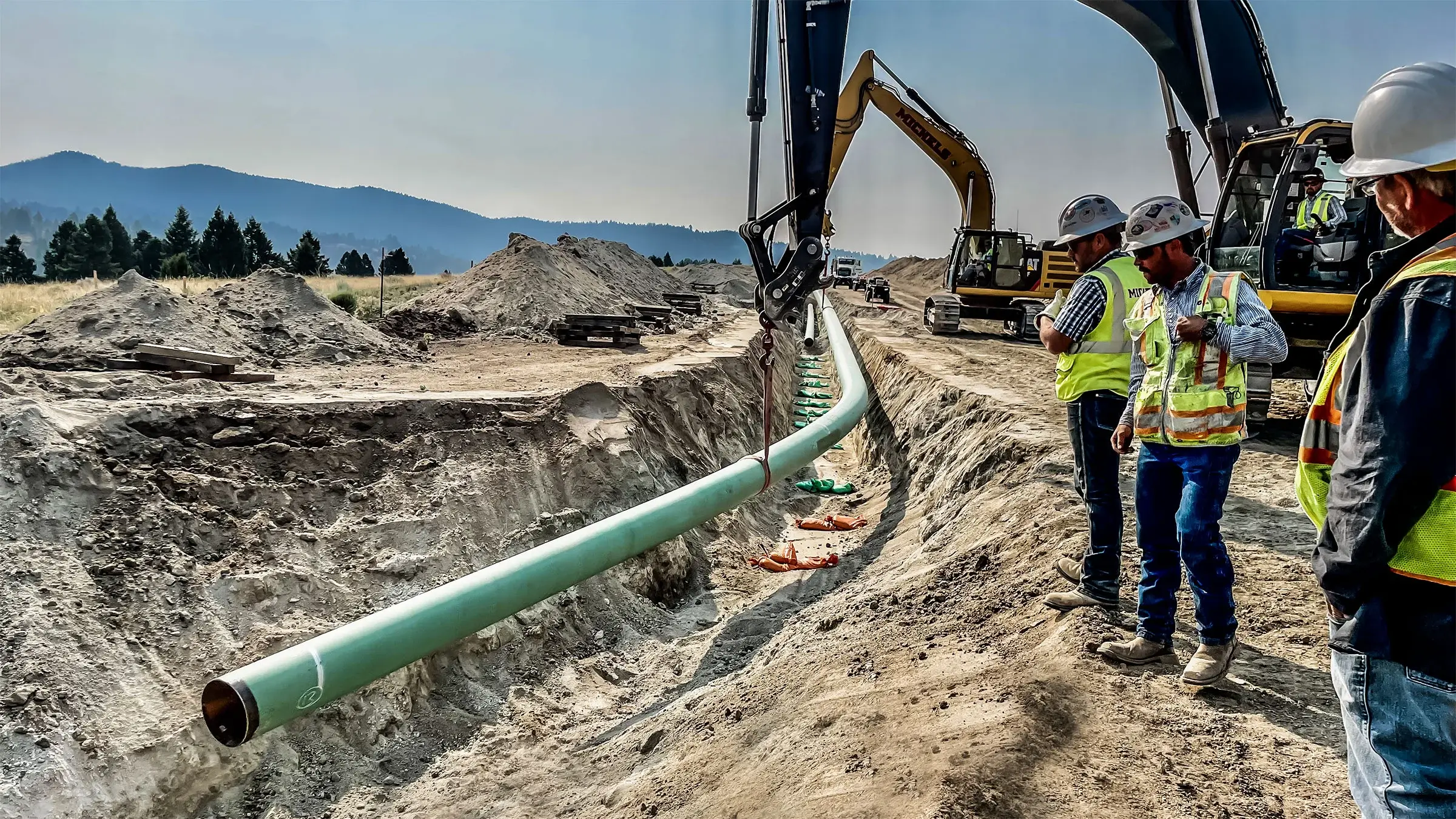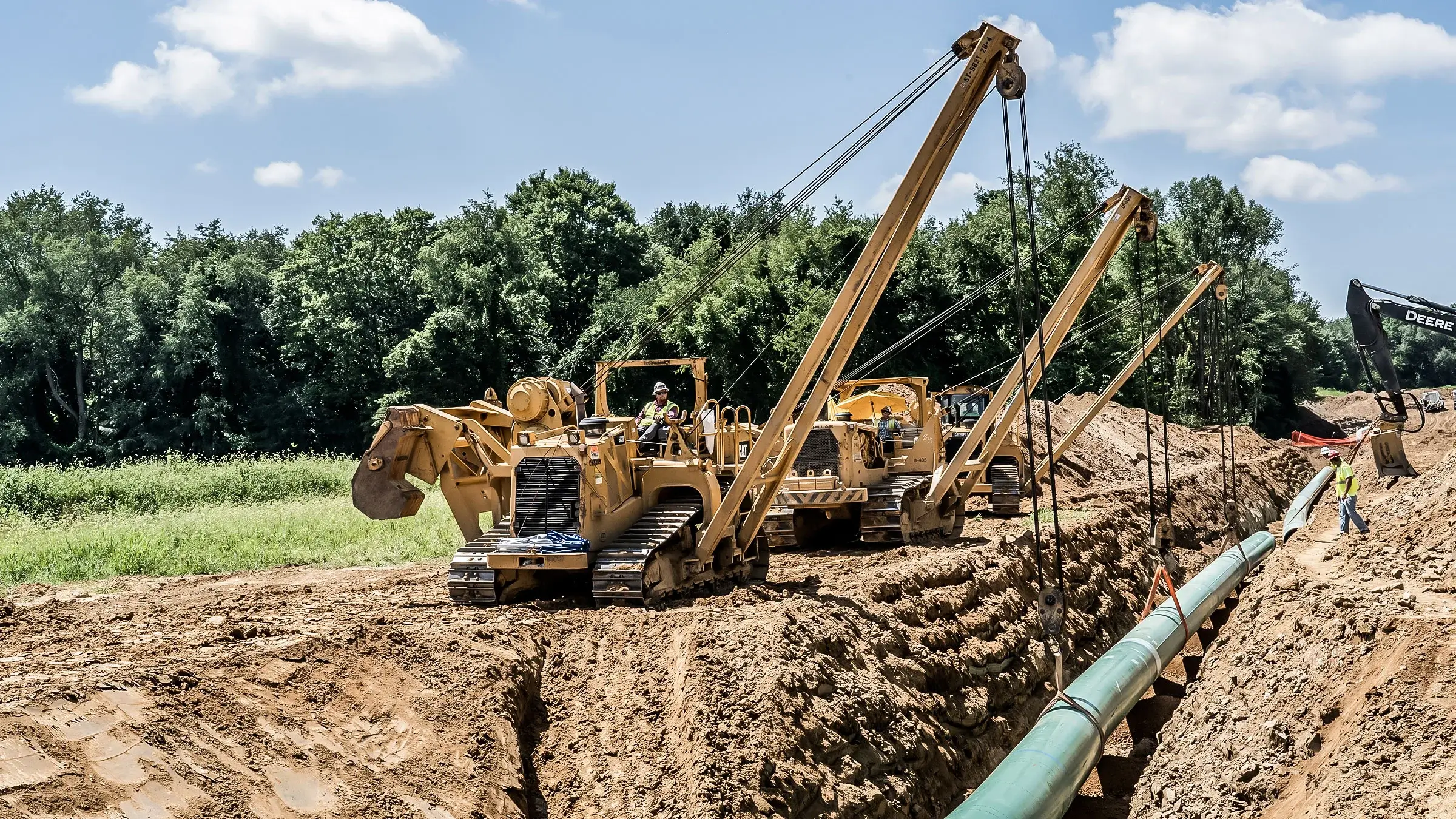Exploring the current Developments in Pipeline Construction Solutions for Modern Projects
The Pipeline Construction sector is undergoing significant modifications. Innovations such as clever materials and robotics are improving conventional techniques. These innovations assure to improve efficiency and safety. Additionally, AI technologies are boosting project management capabilities. As these aspects converge, they raise concerns about their lasting influence on sustainability and cost. Comprehending these technologies is vital for stakeholders seeking to navigate this developing landscape. What effects do they hold for future projects?
The Increase of Smart Materials in Pipeline Construction
As the need for a lot more lasting and effective Pipeline systems enhances, the assimilation of clever materials has actually emerged as a transformative remedy in Pipeline Construction. These sophisticated materials possess unique residential properties that enhance the performance and longevity of pipes. Self-healing polymers can immediately repair small leakages, considerably lowering upkeep prices and downtime. Additionally, materials embedded with sensing units can keep an eye on structural stability and ecological conditions, permitting real-time data collection and evaluation.
Clever materials are corrosion-resistant and commonly light-weight, which not just streamlines installation but also expands the life expectancy of the systems. Their versatility allows pipes to hold up against extreme ecological conditions, promoting safety and security and reliability. As sectors significantly focus on sustainability, the usage of green clever materials adds to minimized environmental influence. On the whole, the rise of wise materials notes a noteworthy change in Pipeline Construction, paving the means for ingenious options to meet contemporary framework needs.
Improvements in Robotics for Setup and Maintenance
The combination of clever materials in Pipeline Construction is matched by improvements in robotics, which are revolutionizing setup and maintenance procedures. Robot innovations, such as automated welding systems and drones, improve efficiency and precision, lowering human error and decreasing safety threats. These robotics can run in tough atmospheres, ensuring that installments are conducted in harmful or remote areas without putting employees at risk.
Robotic examination tools equipped with innovative sensing units give real-time data on Pipeline honesty, permitting for proactive upkeep. They can find leaks or architectural weak points, enabling timely treatments that expand the life-span of Pipeline systems. The usage of robotics not only increases the Construction timeline yet likewise enhances resource appropriation, resulting in set you back financial savings. As these modern technologies proceed to advance, they are readied to play an essential function in shaping the future of Pipeline Construction, making sure integrity and sustainability in infrastructure advancement.
AI-Driven Job Management Equipment Transforming Process
AI-driven task management tools are improving operations in Pipeline Construction by improving decision-making procedures with enhanced accessibility to real-time information analytics. These tools allow teams to react swiftly to job developments, thereby increasing effectiveness. Moreover, structured interaction channels foster partnership among stakeholders, even more enhancing job outcomes.
Enhanced Decision-Making Procedures

Real-Time Information Analytics
Using real-time data analytics, contemporary job administration devices transform workflow in Pipeline Construction. These advanced tools take advantage of man-made intelligence to offer immediate insights right into task efficiency, resource allowance, and prospective risks. By continuously keeping an eye on vital efficiency indicators, teams can promptly adapt to changing conditions, enhancing labor and materials usage. The assimilation of real-time data permits more enlightened decision-making, reducing hold-ups and reducing expenses. On top of that, anticipating analytics can recognize fads and forecast difficulties prior to they escalate, improving overall job effectiveness. Therefore, Pipeline Construction firms that take on these AI-driven tools can enhance task timelines and results, ensuring they remain competitive in a significantly complex industry landscape. This technology notes a substantial shift towards data-centric management techniques.
Streamlined Interaction Channels
Efficient communication is extremely important in Pipeline Construction, where many stakeholders should collaborate flawlessly to ensure task success. The intro of AI-driven project monitoring devices has transformed interaction channels within the industry. These devices promote real-time info sharing, enabling teams to accessibility updates, share documents, and track development efficiently. By automating regular tasks and offering a central platform for communication, these innovations eliminate misconceptions and reduce delays. Boosted exposure into task timelines and source allocation promotes responsibility among employee. Additionally, AI analytics can determine prospective communication voids, guaranteeing aggressive analytical. Inevitably, structured interaction networks not just enhance process but likewise elevate overall job performance, allowing Pipeline Construction firms to fulfill modern-day demands successfully.
Boosted Security Procedures Via Modern Technology Assimilation
The integration of technology in Pipeline Construction has actually resulted in enhanced security procedures. Real-time monitoring systems, wearable safety and security tools, and automated risk analyses are currently necessary components in minimizing threats on work websites. These innovations not only boost employee safety however additionally improve compliance with sector laws.
Real-Time Surveillance Systems
How can real-time surveillance systems change Pipeline Construction security procedures? By incorporating advanced technology, these systems give constant surveillance of Construction activities, making certain instant detection of prospective risks. Sensing units and video cameras can keep track of ecological problems, tools performance, and workforce motions, providing crucial data in actual time. This aggressive strategy allows task managers to determine risks prior to they rise, substantially improving precaution on-site. On top of that, real-time monitoring facilitates conformity with regulatory needs, ensuring that safety standards are met consistently. The capacity to analyze data immediately sustains enlightened decision-making, enabling timely treatments. As a result, Pipeline Construction tasks can run more efficiently while safeguarding the health of employees and explanation decreasing crashes, thus changing the industry's security landscape.
Wearable Safety Tools
Often, wearable security tools are being incorporated right into Pipeline Construction to improve security methods. These innovative devices, consisting of smart helmets, vests, and wristbands, are developed to keep track of worker health and wellness and ecological problems in real-time. Outfitted with sensors, these tools can detect risks such as toxic gas exposure, extreme warm, or high sound levels, offering prompt informs to employees and supervisors. In addition, wearable innovation typically consists of GPS monitoring features, permitting effective location tracking of workers on-site. This ability not only aids in quick response during emergency situations however likewise enhances overall task monitoring. By prioritizing worker safety and security with modern technology integration, Pipeline Construction business are making significant strides in reducing crashes and advertising a culture of security within the sector.

Automated Danger Evaluations
While typical danger evaluations frequently count on hands-on More hints examinations, the combination of automatic risk assessment modern technologies is changing safety and security procedures in Pipeline Construction. These innovative systems utilize information analytics, expert system, and maker discovering to determine potential dangers much more properly and effectively. By constantly keeping track of ecological problems, devices standing, and employee behavior, automated analyses give real-time understandings that boost decision-making. This positive strategy decreases the probability of mishaps and enhances compliance with safety and security policies. Additionally, automated danger evaluations can be upgraded promptly, making certain that all stakeholders have accessibility to the current info. Therefore, Pipeline Construction jobs take advantage of a more secure job environment, lessening disruptions and cultivating a society of safety through technology combination.
Lasting Practices in Pipeline Construction
As the need for power infrastructure climbs, the Pipeline Construction industry increasingly prioritizes sustainable practices that minimize ecological influence. Companies are adopting environment-friendly materials and advanced Construction techniques to decrease their carbon impact. As an example, using trenchless technology enables Pipeline setup with marginal disturbance to the surrounding atmosphere, reducing and protecting natural environments soil disintegration.
In addition, the implementation of renewable resource sources, such as solar or wind, to power Construction activities is getting grip. This change not only lowers dependence on nonrenewable fuel sources yet likewise enhances the general sustainability of Pipeline tasks. Effective waste management practices, including reusing and recycling products, are coming to be criterion in the sector.
Real-Time Surveillance and Predictive Upkeep Solutions
The shift towards lasting practices in Pipeline Construction has actually paved the means for the assimilation of real-time surveillance and predictive upkeep options. These innovations leverage progressed sensors and information analytics to continually evaluate Pipeline honesty and functional performance. By collecting information in actual time, operators can identify anomalies such as leakages or pressure decreases prior to they rise into significant issues. This proactive strategy not just reduces environmental dangers however also lowers downtime and maintenance expenses.
Predictive upkeep utilizes algorithms to forecast prospective failures based on historical data and current performance metrics. This allows timely treatments, optimizing maintenance schedules and source allotment. Generally, real-time monitoring and anticipating upkeep options represent a significant advancement in Pipeline Construction, enhancing safety and dependability while supporting sustainability goals. As markets proceed to accept these advancements, the operational landscape of Pipeline administration is readied to progress significantly, making sure long-lasting feasibility and performance.
The Role of Drones in Checking and Evaluation
Drones have actually become transformative tools in the surveying and evaluation of pipes, supplying enhanced performance and precision. Their ability to catch high-resolution images and video clips from various angles permits for complete assessments of Pipeline stability without taking the chance of human safety. Furnished with innovative sensing units and thermal imaging capacities, drones can spot leakages, rust, and architectural abnormalities that may not be visible to the nude eye.
Furthermore, the implementation of drones substantially lowers assessment time, allowing quicker decision-making for maintenance and repairs. This performance translates to set you back savings and minimal interruption to surrounding settings. Drones can also access hard-to-reach locations, such as sturdy terrains or elevated frameworks, additionally increasing the range of examinations.
As the Pipeline industry continues to embrace technical advancements, the integration of drones into evaluating and assessment procedures is anticipated to grow, establishing brand-new requirements for operational excellence and security in Pipeline Construction services.
Regularly Asked Concerns
What Are the Expenses Related To Modern Pipeline Construction Innovations?
The costs related to contemporary Pipeline Construction innovations typically consist of sophisticated materials, specialized labor, and innovative technology. These elements add to greater first financial investment, however can lead to long-lasting financial savings through improved effectiveness and reduced maintenance requirements.
Just How Do Regulatory Modifications Influence Pipeline Construction Technologies?
Regulative modifications significantly influence Pipeline Construction modern technologies by demanding the adoption of more secure, a lot more efficient approaches. Compliance needs typically drive advancement, leading to innovations in products, design, and Construction strategies that boost general task sustainability and safety and security.
What Skills Are Needed for Occupations in Advanced Pipeline Construction?

Careers in innovative Pipeline Construction require competence in engineering concepts, job management, safety procedures, and environmental laws. Additionally, skills in technology integration, synergy, and problem-solving are essential for passing through the intricacies of contemporary infrastructure tasks.
Just How Can Business Guarantee Conformity With Environmental Specifications?
To guarantee conformity with environmental website here requirements, business must apply extensive training programs, carry out normal audits, and embrace ideal methods in sustainability. Involving with stakeholders and monitoring regulative adjustments further strengthens their commitment to environmental stewardship.

What Are the Trick Challenges Facing Pipeline Construction Today?
The key difficulties dealing with Pipeline Construction today consist of regulatory compliance, environmental issues, fluctuating product expenses, labor scarcities, and the need for sophisticated modern technology integration (Pipeline Construction Services). These variables complicate project timelines and overall performance in the sector
As the demand for extra effective and sustainable Pipeline systems increases, the combination of wise products has emerged as a transformative option in Pipeline Construction. AI-driven task monitoring devices are improving operations in Pipeline Construction by boosting decision-making processes with better accessibility to real-time data analytics. While job administration in Pipeline Construction has typically relied on manual procedures, the integration of innovative tools significantly improves decision-making abilities. Using real-time information analytics, modern-day task management tools reinvent process in Pipeline Construction. Careers in advanced Pipeline Construction call for competence in design principles, job monitoring, security protocols, and environmental laws.